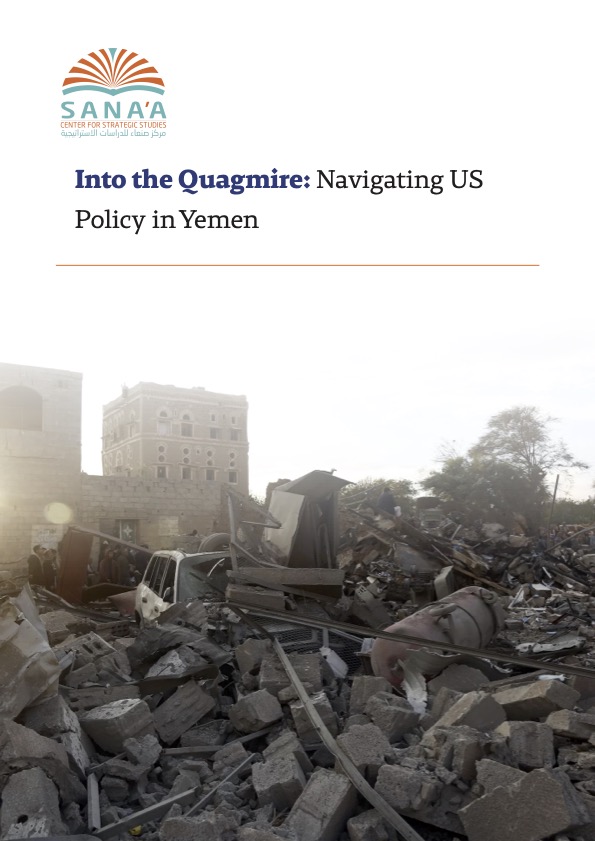Since the inauguration of the new US administration, Washington has adopted a fiercer stance against the Houthis, the last resilient pillar of the pro-Iranian Axis of Resistance. The Houthis are the only Iranian ally that have had their power increase in the conflagration with Israel. Their attacks against commercial shipping in the Red Sea were viewed as a global threat to freedom of navigation, prompting a US military reaction in 2024 that has escalated after the return of Donald Trump as president. Washington perceives the Houthis as an extension of Iran and attacks against them as an easy way to push the Islamic Republic toward negotiations on its nuclear program. However, his assessment makes dangerous assumptions about the Iranian-Houthi relationship. The Houthis have their own agenda, which may not necessarily align with that of Tehran, and will likely not hesitate to defy Iranian admonitions if they believe escalation will serve their interests. So, what are US options in this evolving landscape?
Lacking a clear direction, US policy has become both more assertive and increasingly perilous. Since the Houthis’ Foreign Terrorist Organization (FTO) redesignation in January, the Trump administration has adopted escalatory rhetoric, which materialized in mid-March as the US began daily airstrikes against a wide range of targets across Yemen. The new strikes went far beyond the Biden administration’s policy of limited engagement – by the end of March US forces had targeted Sana’a and the Houthis’ stronghold in Sa’ada, as well as military assets in other governorates. The strikes also aimed at decapitating the group by targeting its leadership, though its effectiveness in this regard is not yet clear.
The recent escalation in Yemen has effectively inaugurated a new phase of US engagement in the region, one marked by unpredictability. The Houthis have proven resilient, both to US airstrikes and those of the Saudi-led coalition, which the group managed to survive for over seven years. This is not to say that the Houthis – and by extension the Yemeni people under their control – will not face the grim consequences of Trump’s escalatory policy. But the group’s proven staying power presents Washington with a dilemma.
Despite President Trump’s claims regarding his success in “decimating” the Houthis, Pentagon officials believe otherwise, as the costly strikes have reportedly had limited success destroying the group’s underground weapons arsenal. They have also failed in another way: there has not been a significant public reaction from Tehran, other than a condemnation of the airstrikes. One Western media report, citing an Iranian official, claimed that Iranian military personnel are leaving Yemen, pointing to a lack of faith in the Houthis’ ability to survive the new onslaught and the series of blows sustained by Tehran and its allies in the past year. While the purported withdrawal of Iran from Yemen might be considered a success of Trump’s policy, it could also be an indication that the Islamic Republic is not interested in tying the issue to its other interactions with Washington, including nuclear talks.
This leaves the Trump administration with few and difficult options. Prolonging and escalating an air campaign against the Houthis to “annihilate” the group may not be a viable option. Perhaps realizing this, officials in Washington have already made overtures to regional allies and factions on the ground in Yemen to help deal a decisive blow to Houthi capabilities. First on the list were the Saudis. Riyadh is interested in pursuing an even closer relationship with the US and striking a deal that would safeguard its interests. However, Riyadh will be hesitant to unequivocally support US policies in the region for fear of renewed attacks against the kingdom. Houthi missiles aimed at Israel have disintegrated or fallen on Saudi territory. Having come close to reaching a deal with the Houthis, Saudi Arabia still has no interest in making itself a target once again. Saudi sources have even denied providing logical support for US airstrikes for fear of retaliation. Riyadh would likely need significant US assurances to coordinate openly with the Trump administration against the Houthis.
The US could have better chances at the local level, given that some Yemeni actors welcomed the FTO designation and renewed airstrikes on the Houthis. The Yemeni Embassy to the US even hinted towards a desired point of pressure by urging the Americans to help recapture the port of Hudaydah. For many Yemeni players in the pro-government camp – be it pro-Islah forces, Tareq Saleh’s National Resistance STC-affiliated forces, or others – the US is doing work for them and could shift the balance of power against the Houthis by weakening the group’s capability on Yemeni frontlines. At the same time, it appears that Washington is seeking the support of local actors to avoid deepening its own involvement in an operational theater with little strategic significance for the US. There have been rumors of the US approaching local forces and urging them to act against the Houthis. However, it seems that anti-Houthi forces are hesitant to join the US offensive without assurances of air support and weaponry, either from Washington or Riyadh. These demands remain unsatisfied, but such overtures suggest that Washington is not yet ready to engage further, nor does it have a cohesive and predetermined strategy on how to deal with the Houthis.
The new strategic landscape presents significant challenges, especially given that Washington is unwilling to deepen its engagement in the region as part of its stated “America First” policy. Even if Houthi responses to US airstrikes are generally ineffective, as long as they persist, Washington must find an effective counter. Engaging regional and local partners would be essential in a more comprehensive strategy, but the US must provide them with the necessary assurances and incentives to take a stand against the Houthis.
This commentary is part of a series of publications produced by the Sana’a Center and funded by the government of the Kingdom of the Netherlands. The series explores issues within economic, political, and environmental themes, aiming to inform discussion and policymaking related to Yemen that foster sustainable peace. Any views expressed within should not be construed as representing the Sana’a Center or the Dutch government.

 اقرأ المحتوى باللغة العربية
اقرأ المحتوى باللغة العربية
